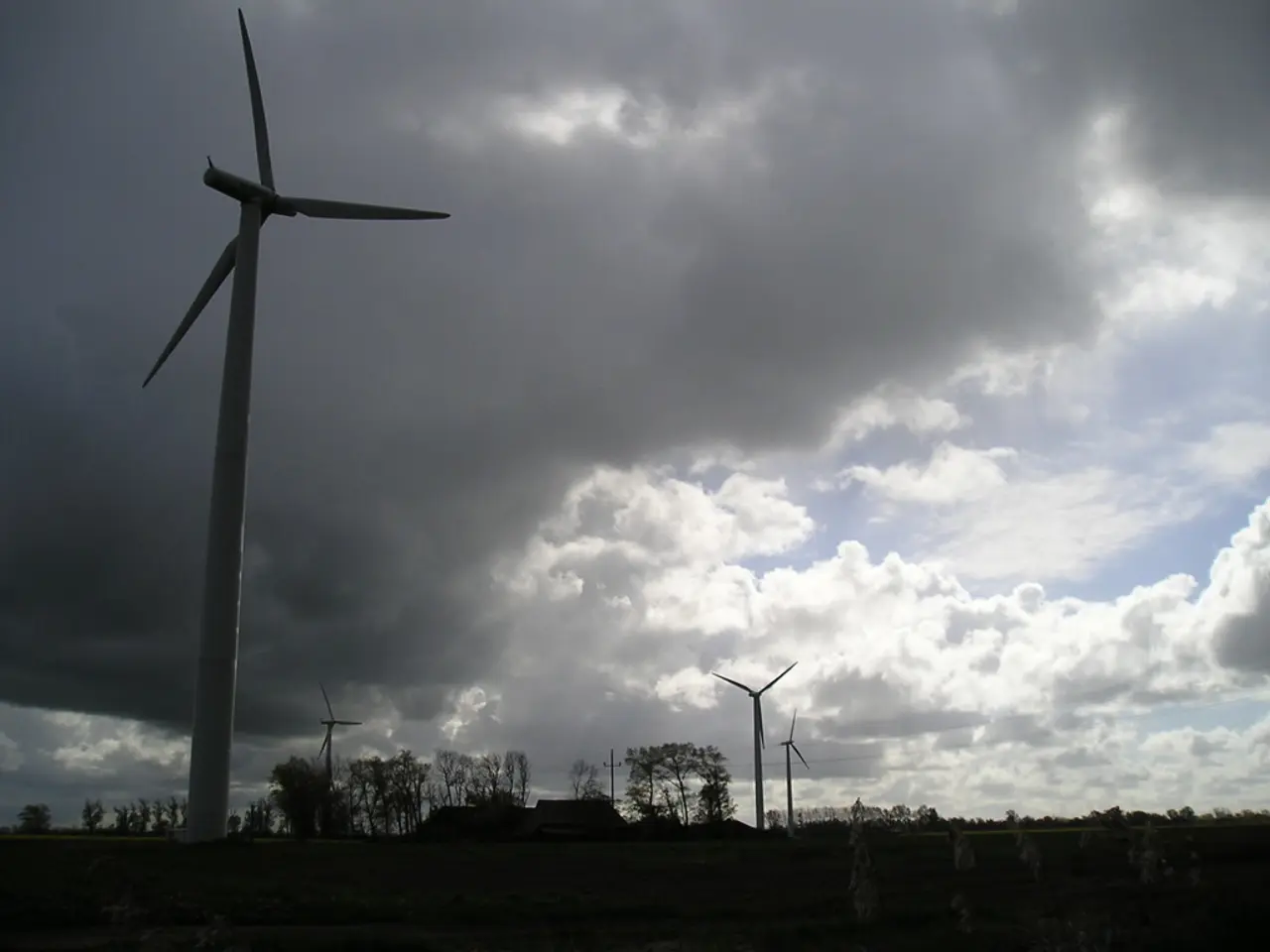Strategies for Reinforcing and Safeguarding Your Home Against Wind Harm
Preparing for Strong Winds in Victoria: A Comprehensive Guide
Strong winds, as defined by the Beaufort Scale, can range from 40 to 117 km/h in Victoria. With winds of force 8 to 12 on the Beaufort Scale, ranging from 88 to 117 km/h, causing trees to uproot and causing considerable to widespread structural damage, it's crucial for residents to take precautions to protect their homes and vehicles.
The Bureau of Meteorology (BoM) describes winds based on the Beaufort Scale and has identified September as the windiest month on average in Victoria, due to increasingly warm, sunny weather contrasting with cold winter surfaces.
To safeguard your property, consider implementing the following strategies:
Home Protection
- Structural Reinforcement: Strengthen roof attachments, windows, doors, and garage doors with wind-rated fixtures or impact-resistant materials. Ensure roofing materials are securely fastened.
- Install Storm Shutters or Reinforced Windows: Use storm shutters or impact-resistant glass to protect windows.
- Secure Outdoor Items: Bring in or securely anchor loose items such as garden furniture, bins, and pots that could become projectiles.
- Safe Landscaping: Avoid planting large trees too close to the house that might fall in high winds; use windbreaks like shrubs or fencing to reduce wind speed.
- Roof and Gutter Maintenance: Regularly inspect and maintain the roof and gutters to prevent damage from flying debris.
- Garage Door Reinforcement: Since garage doors can be vulnerable, retrofit with bracing kits if necessary.
Vehicle Protection
- Garage Parking: Park vehicles in a garage or carport when strong winds are forecasted.
- Avoid Parking Near Trees or Structures: Vehicles parked under trees or near loose objects may be damaged by falling branches or debris.
- Use Car Covers or Wind Deflectors: If a garage is unavailable, use a heavy-duty car cover and consider wind deflectors.
Given Victoria’s coastal exposure and increasing incidence of strong winds linked to climate conditions, it is recommended to follow local council guidelines, which may include specific building codes for wind resistance. The Victorian Government supports clean energy and environmental planning but does not currently provide specific residential wind protection guidance.
In an emergency related to strong winds, call Triple 000 for assistance. You can also call VICSES on 132 500 for assistance. Stay up-to-date via the VicEmergency website or app for information about strong winds and check VicTraffic for road closures and hazards during strong winds.
For detailed, location-specific advice, Victorian residents can consult local councils or building authorities who enforce the "Australian Standards AS4055" which covers wind classifications and construction guidelines for wind-prone areas. Insurance providers in Victoria may also provide tailored recommendations and cover options for wind damage.
Preparing your house and having adequate home insurance can help protect you and your property from strong winds and gusts.
Adopting a home-and-garden lifestyle that accounts for wind resistance can help minimize damage during strong winds in Victoria. This might include structurally reinforcing parts of your home, implementing wind-rated fixtures or impact-resistant materials, securing outdoor items, and using storm shutters or reinforced windows.
Furthermore, it's important to consider weather conditions while deciding on your lifestyle choices, considering that September tends to be the windiest month in Victoria due to warmer weather contrasting with cold surfaces.




